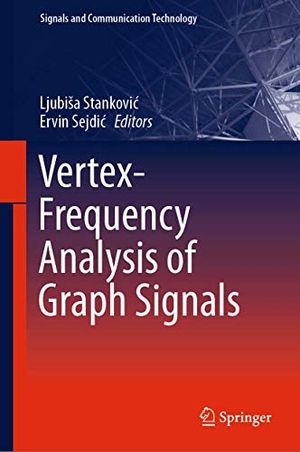Für statistische Zwecke und um bestmögliche Funktionalität zu bieten, speichert diese Website Cookies auf Ihrem Gerät. Das Speichern von Cookies kann in den Browser-Einstellungen deaktiviert werden. Wenn Sie die Website weiter nutzen, stimmen Sie der Verwendung von Cookies zu.
Cookie akzeptieren
Vertex-Frequency Analysis of Graph Signals
- Springer International Publishing
- 2018
- Gebunden
- 524 Seiten
- ISBN 9783030035730
This book introduces new methods to analyze vertex-varying graph signals. In many real-world scenarios, the data sensing domain is not a regular grid, but a more complex network that consists of sensing points (vertices) and edges (relating the sensing points). Furthermore, sensing geometry or signal properties define the relation among sensed signal points. Even for the data sensed in the well-defined time or space domain, the introduction of new relationships among the sensing points may produce new insights in the analysis and result in more advanced data processing techniques. The data domain, in these cases and discussed in this book, is defined by a graph. Graphs
Mehr
Weniger
zzgl. Versand
in Kürze